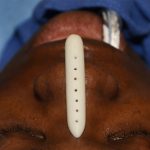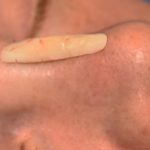Rhinoplasty remains one of the more challenging of all plastic surgery procedures. Because of the intricacy and interconnections of the bone and cartilages of the nose, surgical outcomes are far from guaranteed. Given that the nose is the most central and forward projecting part of the face, it undergoes considerable patient scrutiny, particularly after surgery. The recipe of its anatomic complexity and the high visibility of the results makes the need for secondary rhinoplasty surgery not rare.
Fortunately, most secondary nose surgeries are relatively minor and improvement obtainable. Whether it is a small residual bump or irregularity at the nasal bridge or some tip or nostril asymmetry, a few minor adjustments can make the results better. Correction of more significant problems, such as persistent deviation, middle vault collapse, and nasal bone asymmetry for example, however, require more than just a few tweaks or minor adjustments.
In certain cases of secondary and tertiary rhinoplasty, the need for structural takedown and reconstruction with support is the key to an improved result. The need for support requires either cartilage grafts harvested from the patient or the use of synthetic materials which are off-the-shelf prefabricated materials. These two nose graft choices have their advocates and opponents. In the right scenario both may be effective and each has its own advantages and disadvantages which must be considered on an individual case basis.

Secondary rhinoplasty or the multiply operated nose often presents with different problems. The tissues are scarred and the septum is usually depleted. Graft choices become harder and donor sites outside of the nose must be considered. It is at this point that synthetic materials have their greatest appeal as they offer very useable forms which are easily modified. But their use in secondary or tertiary rhinoplasty puts them at greatest risk, implanting them in scarred and thinned tissues whose vascularity is less than ideal. Which makes their risk of postoperative much higher.

Barry L. Eppley, M.D., D.M.D.
Indianapolis, Indiana


